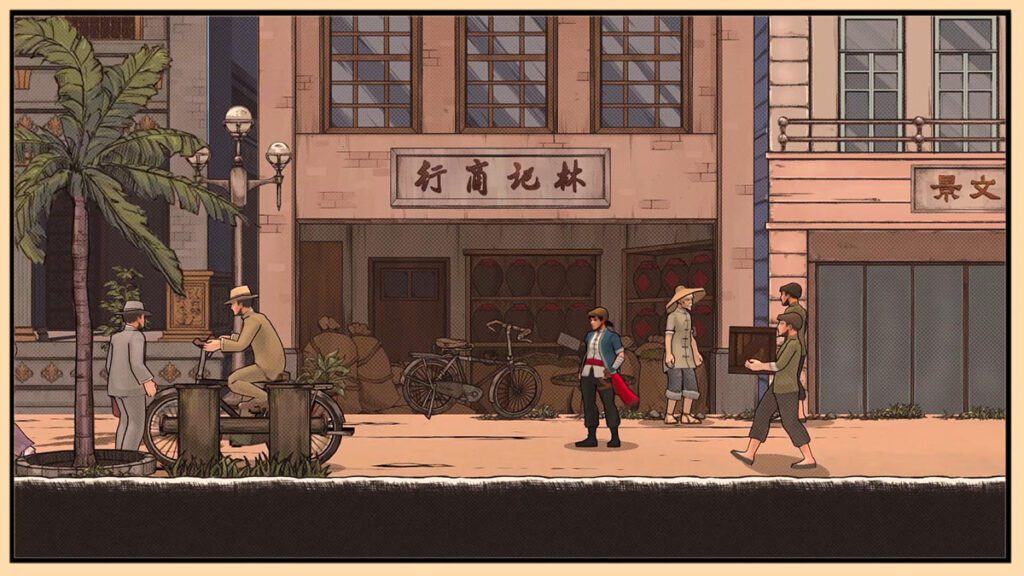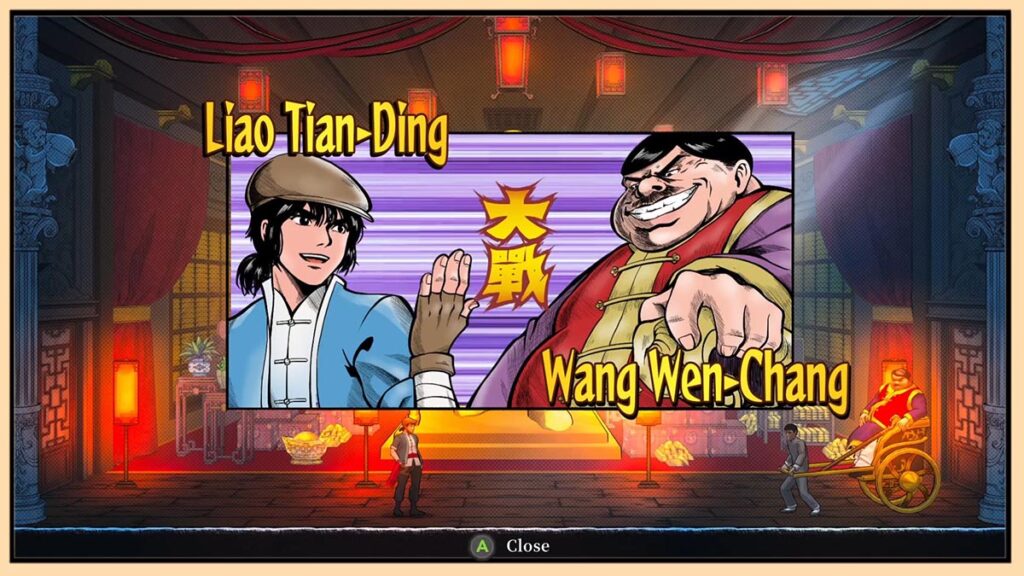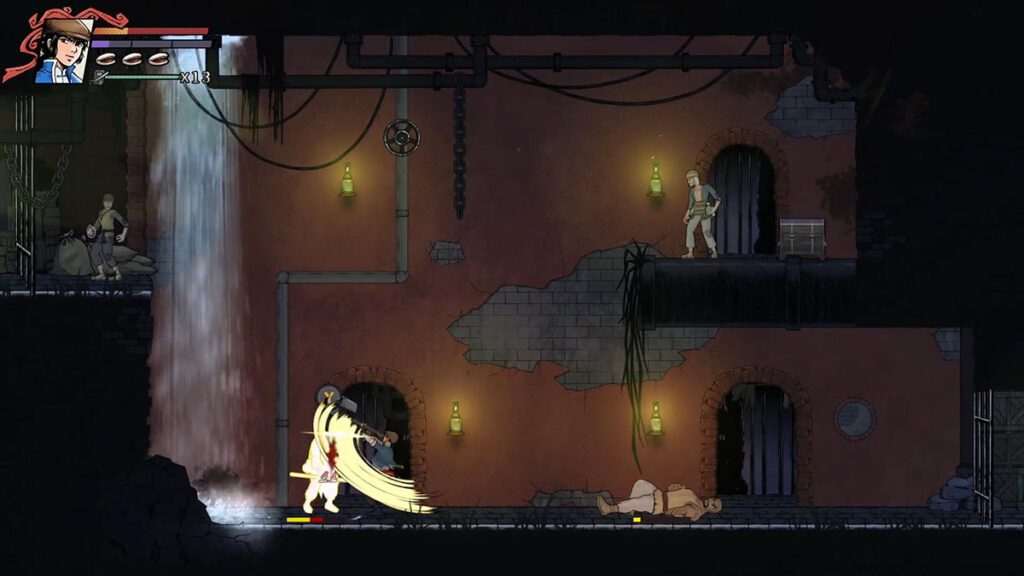Attack. Dodge roll. Reflect the enemy projectile. Steal the enemy’s weapon. Eliminate. This combat flow is The Legend of Tianding at its’ best moments. The frenetic action carries energy through each encounter. In these moments of combat and exploration, The Legend of Tianding excels. Unfortunately, not everything is perfect but as a whole, the game succeeds more than it struggles.
Developed by: Creative Games Computer Graphics Corporation
Published by: Neon Doctrine
Released: November 1, 2021 (Steam & Nintendo Switch)
The Legend of Tianding by CGCG tells the story of Liao Tianding, a real-life folk hero during the Japanese occupation and colonial control of Taiwan. Liao Tainding was a criminal but robbed from the rich and gave to the poor. The real-life Liao Tianding died in 1909 and his death is worked into the narrative of the game. Part embellished myth, part historical representation, The Legend of Tianding provides a glimpse into Taiwanese life in 1908 under Japanese rule.
Story
This focus on an accurate representation of the culture and time period makes the central conflict between Liao and the Taiwanese police and the Japanese army. There are sidequests and subplots that explore other Taiwanese legends. As a character that steals from the rich to give to the poor, the game provides opportunities to give money to beggars. Charity results in passive buffs and rewards the player with historically accurate collectibles that provide a little history.
The story plays out with in game dialog and Hong Kong style manga panels. At the end of each chapter, a Taiwanese radio announcer recaps the story of the chapter and the action in the levels. Both the period specific radio broadcast and manga panels create a sense of place and culture to the game.
Gameplay
History lesson aside, The Legend of Tianding core gameplay is a 2D action platformer. Movement is fluid and provides a sense of speed in combat. Controls are tight and responsive. Tianding has a standard attack but also can steal an enemy’s weapon once they are low on health. This creates weapon diversity through encounters. Furthermore, players may strategically choose to steal ranged weapons or disarm the most powerful enemy of the screen. While enemy weapons have limited uses, they can be extended through the buffs provided by beggars.
In addition to weapon variety, Tianding can discover a variety of special moves that continue to grow as the game progresses. Many of these are on the critical path, but exploration in the levels is usually rewarded. Initially, these skills are offensive, but defensive skills are added as the chapters progress. Combat really begins to shine when players can chain together a series of offensive and defensive moves. Battles flow and players feel empowered. If players feel too overpowered or underpowered, there are two difficulty settings.
Graphics & Sound
Manga panels for story hold true to the geographic and cultural setting. General gameplay includes slight 3D rendered characters on a 2D plane. The coloring of the background, setting, and characters includes the use of Ben Day dots, the parallel dots of color used in newspaper comics and classic comic books. Unfortunately, this artistic style is not consistently applied. Fortunately, it is consistent enough to create the illusion of playing comic strip from the time period. Fortunately, all these artistic choices work and succeed in giving the game a historic feel
The soundtrack uses traditional Taiwanese musical themes to match the period setting.
Concerns
There is a difficultly spike in the final boss. It doesn’t feel cheap, but it doesn’t leave much room for mistakes. The real concern is over the pacing. The action levels are exciting and the combat is engaging, but it all comes to a halt between levels for lengthy periods of exposition and traveling across the city for a mission. Yes, there is fast travel. Yes, it does add to the sense of place. Consequently, it also drains all the momentum. For some, these narrative breaks may be the chance to catch their breath or slow their pulse. For others, they would wish for more of the creative and stratifying action stages.
Almost Legendary Tianding
The historical sense of place The Legend of Tianding creates is commendable. I learned a lot about the time period and colonial rule through the collectibles. Understanding that the education is by design explains the slowed pacing intermixed with combat stages. In the end, the action platformer stages are fluid and the satisfying combat makes the whole experience worthwhile.



